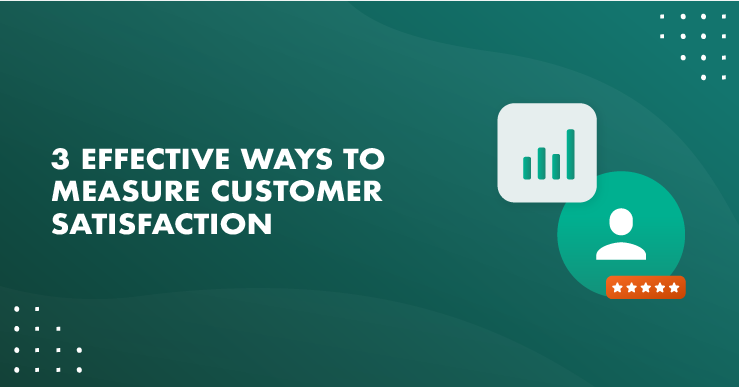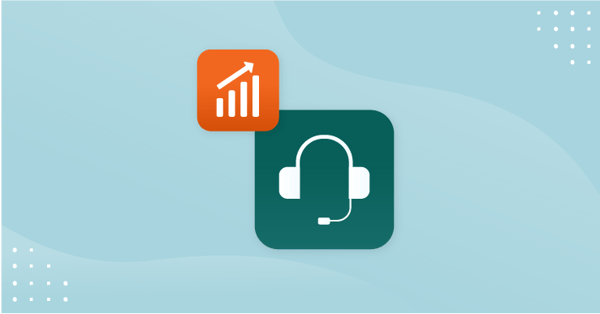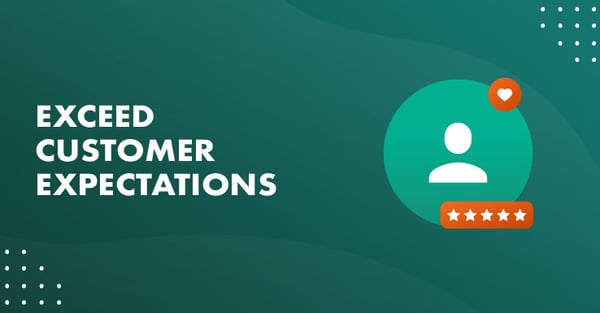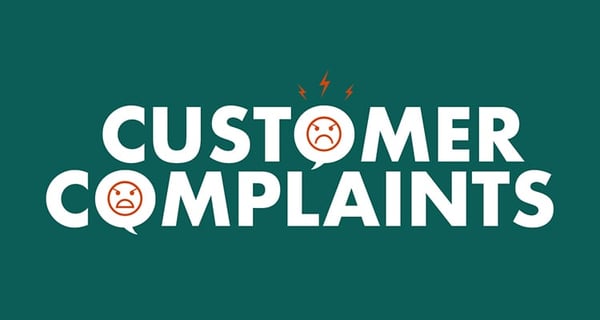Customer satisfaction can make or break your company's success.
According to State of the Connected Customer 2022, customers expect more from businesses than ever before.
88% of customers say the experience a company provides is as important as its product or services – up from 80% in 2020.
In the heart of Europe, B2B companies are feeling the heat.
We recently asked B2B customer service teams based in Europe what their main customer service objectives were.
The majority (82%) said they were focused on increasing customer satisfaction.
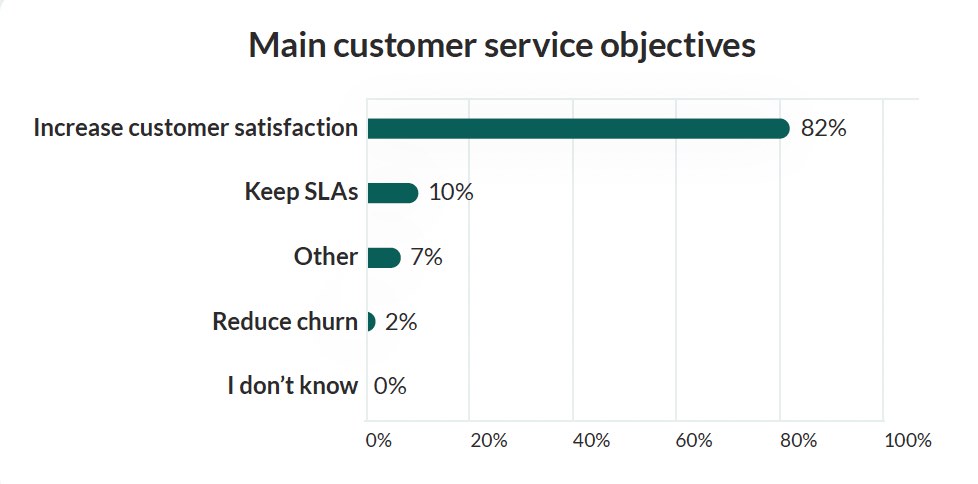
But here's the thing:
While 82% of companies see it as a main objective, only 33% track it as a key performance indicator (KPI).
What does the research tell us?
It suggests that European B2B companies struggle with the practicalities of customer satisfaction. They're aware of its significance, but struggle to quantify it effectively, decode the gathered data, and devise actionable strategies based on their findings.
So, how do we bridge this gap?
It starts with understanding what customer satisfaction really is, why it's so critical, and most importantly, how to measure it effectively.
What is customer satisfaction?
Customer satisfaction is a measure of how a business’s products or services meet, exceed, or fall short of customer expectations.
It reflects how customers feel about their interactions with a company and its offerings.
These feelings can be influenced by various aspects of the customer experience, such as the quality of the product or service, the purchasing process, customer support, pricing, and more.
Unlike tangible metrics like sales numbers or market share, customer satisfaction is somewhat subjective and can be challenging to quantify.
Why measure customer satisfaction?
Imagine you're hosting a big party.
You're not just going to send out invitations and hope for the best, right? You'd want to know if your guests enjoyed the food, the music, the atmosphere.
The same goes for your business.
You can't just sell your product or service and hope your customers are happy. You've got to know!
Measuring customer satisfaction is like getting an invitation to your customers' thoughts. It's about knowing what's working, what's not, and where you can improve.
That’s why KPIs are so important.
As the old saying goes, “You get what you measure.”
If you measure operational tactics, you’ll get operational results, and vice versa.
What we found in our study of the European B2B customer service market surprised us.
Although the majority of companies told us that customer satisfaction was their key objective, 39% ranked Service levels as their most important KPI.
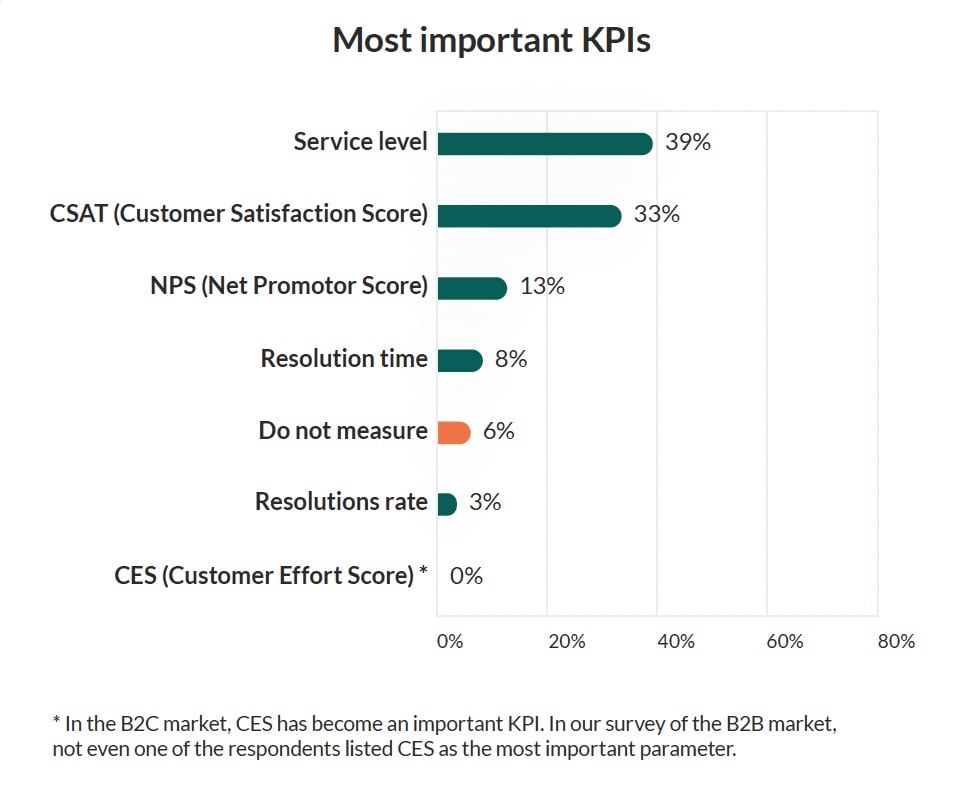
Given that customer satisfaction is ranked as the main customer service objective, we expected the KPI to be much higher.
The disparity in the data indicates that customer service teams are more focused on quantity than quality.
What’s the difference between customer satisfaction and service levels?
Measuring customer satisfaction gives you insights into factors that service levels alone can't provide.
Service levels primarily focus on the efficiency and effectiveness of service delivery, such as response times, resolution rates, or adherence to service level agreements.
However, a high level of service performance does not automatically guarantee customer satisfaction.
Customer satisfaction is a more holistic metric.
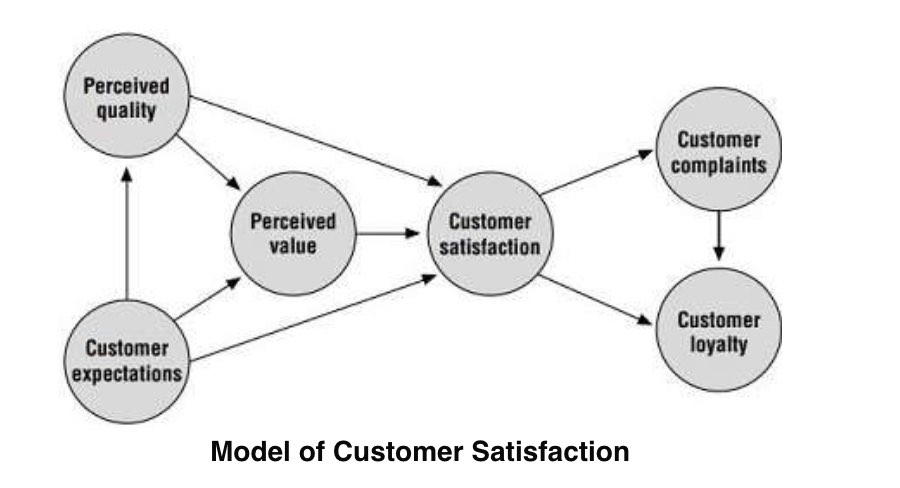
It considers how well your products or services meet or exceed customer expectations, how problems are resolved when they occur, and how valued customers feel during their interactions with your business.
For instance, you may have an excellent response time, but if your customers don't feel heard or understood, their overall satisfaction may still be low.
By measuring customer satisfaction, you get a more comprehensive understanding of your customers' experiences, which can drive customer loyalty, word-of-mouth referrals, and ultimately, business growth.
3 ways to measure customer satisfaction
Understanding how your customers feel about your products and services is key to expanding your business. By measuring customer satisfaction, you gain valuable insights into how well you're meeting their expectations.
That being said, there isn’t a one-size-fits-all way to measure customer satisfaction. There are different methods and tools you can use to understand the voice of the customer:
1. Customer satisfaction surveys
Satisfied customers are a competitive advantage.
While 78% of customers would be willing to go out of their way to a company that has better customer service, 74% would switch to a competing brand or company if they found out that they provide better customer service.
So how can you tell if your customers are satisfied with your products and services?
A Customer Satisfaction (CSAT) Survey can help you find out.
CSAT measures how happy customers are with a product or service they have purchased from you. It measures a single point in time.
Survey questions can be as simple as a single question, such as "How satisfied are you with our product/service?" or to more intricate ones delving into the nitty-gritty of the customer experience.
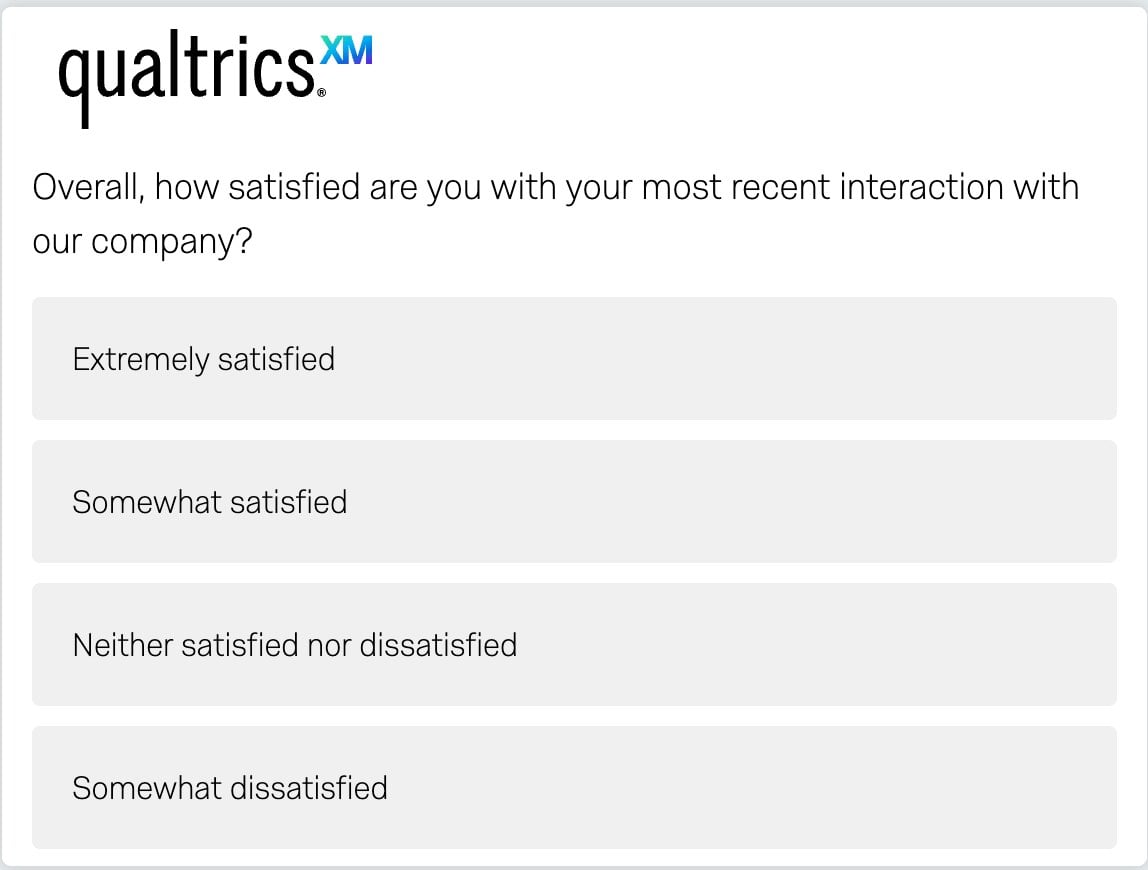
When you know why loyal customers had a great experience, your business can recreate it in the future to retain customers.
2. Customer Effort Score (CES)
Another metric for gauging customer satisfaction is the Customer Effort Score (CES).
CES measures the effort a customer has to invest to get their issues resolved, requests fulfilled, or questions answered.
Research indicates that effort is the strongest driver of customer loyalty, even more impactful than customer delight.
Use CES after various interactions with your company to gauge how easy it is for customers to get the help they need.
Here are a few examples of when you could use CES:
- Immediately after completing a purchase with your company
- Immediately after an interaction with customer support
- After they've read important info from your help center
An example of what a CES might look like this:
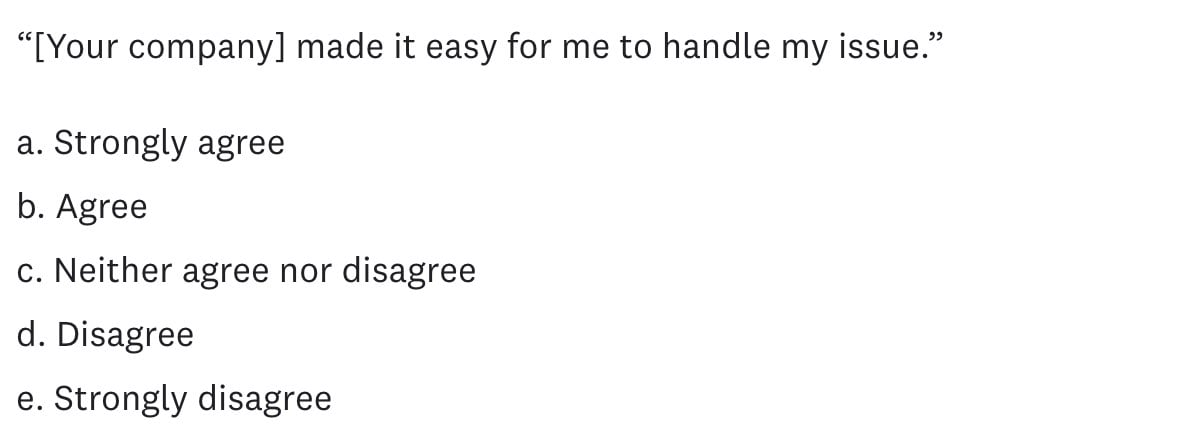
By measuring the Customer Effort Score, you can identify and tackle any obstacles that might be affecting your customers' happiness and satisfaction.
3. Net Promoter Score (NPS)
The Net Promoter Score (NPS) is another simple yet powerful metric used to gauge customer loyalty.
Customers are asked one straightforward question:
"How likely is it that you would recommend our company/product/service to a friend or a colleague?"

Their responses, on a scale of 0 (not at all likely) to 10 (extremely likely), are categorized into promoters (9-10), passives (7-8), and detractors (0-6).
The NPS is then calculated by subtracting the percentage of detractors from the percentage of promoters.
This metric is vital because it not only measures customer satisfaction but also customer loyalty – a critical factor for business growth.
Studies have shown that higher customer satisfaction leads to higher revenues and profitability. In separate research, Customer Gauge found that a 10+ increase in NPS score correlates with a 3.2% increase in upsell revenue.
It pays to add NPS to your customer satisfaction toolkit.
Conclusion
Customer satisfaction isn't just a box to tick or a nice-to-have feature.
It's the key to customer retention, customer loyalty, and ultimately, your top and bottom line.
But remember, it's not enough just to be aware of its importance.
It's critical to measure it effectively, understand the data, and use those insights to fine-tune your business strategy.
Whether it's through Customer Satisfaction Surveys, Customer Effort Score, or Net Promoter Score, there's a wealth of tools at your disposal.
Our research shows that only 33% of European B2B companies are making customer satisfaction a key performance indicator. It's time for that to change.
By shifting your focus from service levels to customer satisfaction, you’ll not only meet customer expectations, but exceed them.
Want to read on? Check out our article about Net Promoter Score: Our 5-step process to grow NPS by 22 points!
